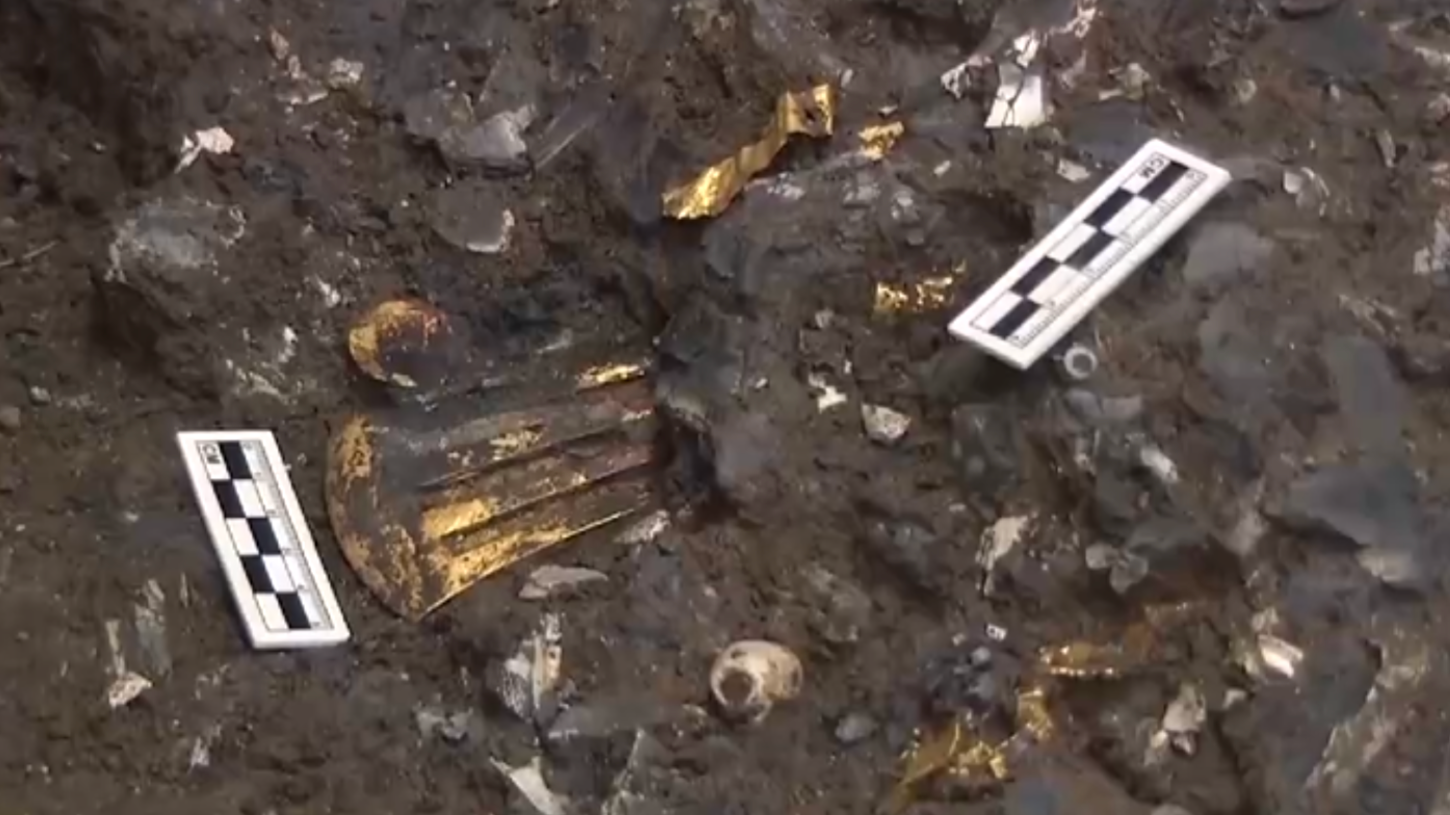
An axe-shaped gold ware is found at the No. 5 sacrificial pit of the Sanxingdui Ruins site in southwest China's Sichuan Province. /CMG
An axe-shaped gold ware is found at the No. 5 sacrificial pit of the Sanxingdui Ruins site in southwest China's Sichuan Province. /CMG
An axe-shaped piece of gold ware has been found at the No. 5 sacrificial pit of the Sanxingdui Ruins site in southwest China's Sichuan Province amid the ongoing excavation at the 3,000-year-old treasure house.
Among the six new sacrificial pits found in March, pit No. 5, though the smallest in size, contains the largest number of gold pieces.
The newfound item is likely to be the next most important gold artifact found from the pit after the half-face gold mask which was unearthed in March, according to Li Haichao, an archaeologist in charge of the pit.
Currently, 7 centimeters in length is exposed. Its shape resembles an axe with a curved blade in the front and three grooves on the surface. It has not yet been confirmed whether the piece is actually an axe or an ornament belonging to another artifact.
What has surprised the archaeologists is its thickness. Other gold artifacts found in the same pit are around 1 millimeter thick, but this one is about three millimeters thick.

A gold bead is found at the No. 5 sacrificial pit of the Sanxingdui Ruins site in southwest China's Sichuan Province. /CMG
A gold bead is found at the No. 5 sacrificial pit of the Sanxingdui Ruins site in southwest China's Sichuan Province. /CMG
Meanwhile, a number of beads have been found in the pit that contain over 99 percent of pure gold, according to Li.
They are very small. The biggest ones are no more than 1 or 2 millimeters in diameter. Based on current research, Li believes that they are likely to have been created for decoration.
Read more:
China unveils new major discoveries from Sanxingdui Ruins site
Bronze sacred tree unearthed from Sanxingdui Ruins site
Large-sized well-preserved bronze mask unearthed at Sanxingdui ruins

